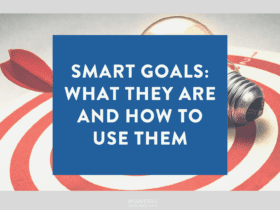You don’t have much of a brand if you don’t have advocates ready to make a song and dance over you.
Social media advocacy is used by businesses to connect with their target audience and motivate them to recommend your products and services.
While you can brag about your own product or service, social media advocacy is a more effective way to spread the word. It entails enlisting the help of passionate consumers, known as brand advocates, to promote you via their own social media channels.
It’s an extension of the tried-and-true tactic of word-of-mouth marketing, and it’s a great way to generate those all-important meaningful relationship moments. This is evident with 92% of online consumers trusting recommendations from their social circles.
When done correctly, a brand advocacy campaign allows you to expand your roster of marketers at minimal cost, most of the time for free.
Creating your social media advocacy program and recruiting brand advocates takes time.
Read below how to get started on your very own social media advocacy program.
What is brand advocacy?
Brand advocacy simply implies that those closest to your brand and who appreciate the product or service will continue to express their support for your brand by naturally promoting the organisation to new audiences.
People that promote and support your products or services are referred to as brand advocates. By being ardent supporters of what your company does, these are people who play a significant role in word-of-mouth marketing, generating new business, and building a strong brand reputation.
Why is brand advocacy important?
One of the most critical reasons brand advocacy is significant is that it is more honest and organic, which audiences prefer in today’s saturated digital environment.
Your brand advocates are real people who believe in your brand, mission, products, and services and endorse them without being compensated, which is a big win for marketers.
Potential buyers who see it find it far more authentic, and they are less distrustful of the intentions, knowing that these people are not being paid to promote. According to a Forrester Research Inc. survey, 18% of customers trust influencers, whereas 92% trust brand advocates.
How to set up a social media advocacy program
Step 1: Set goals
First, think about what you want to accomplish with your social media advocacy programme. What types of brand advocates are you seeking to join your community? What kind of return on investment are you looking for?
To help you develop the most successful objectives, use the SMART goal-setting programme; specific, measurable, attainable, relevant, and timely goals. For example, “create a brand advocacy campaign that builds my Instagram following by 20% over two months.”
Step 2: Find your advocates
Not to burst your bubble, but not everyone who follows your business on social media shares the same passion and enthusiasm for your brand.
A 2017 study by Harvard Business Review found that likes, shares, and engagement are not predictors of action or behaviour.
When it comes to discovering the audience with a true passion for your brand, media monitoring – whether conventional, digital, or social media is necessary.
People with real promoter potential are those that interact with your business, offer feedback, and independently talk about your products or services, praising you in their own words rather than leave an emoji comment on an Instagram post.
Take the effort to identify your consumer champions so that you can contact them when it’s time to launch a campaign or ask them for feedback on your messaging or goods in the meantime.
To find your brand advocates follow users that follow you and engage with their content, reward the people who stand out in your community, highlight the followers who contribute positively to your online discussions.
Running a user-generated content competition is also a great way to find advocates. Apple’s #ShotOnIphone UGC marketing campaign is a fantastic example of finding advocates, generating trust, demonstrating authenticity, and increasing engagement and sales.
Apple was confronted with a problem with the iPhone, where it was said that the low-light camera quality was poor, resulting in customer unhappiness. As a result, Apple invited its consumers to contribute their photographs and videos using the brand hashtag to reclaim lost trust, damaged brand image, and dwindling sales.
They selected the UGC and executed social media ads highlighting spectacular low-light UGC pictures that gained social proof, improved sales, and demonstrated Apple’s strong brand advocacy and commitment.
Step 3: Consider your employees
Employee advocacy is known as the promotion of a company by its employees.
Considering most staff are likely to already be active on social media (perhaps even platforms your brand is not active), they can share information on your products or campaigns.
This can assist in improving the brand’s reputation among consumers, possible new hires and get the brand message out to more people.
To encourage your staff, you can organise a competition where every employee who shares a piece of marketing material on their social media accounts receives a prize or goes in the running to win a prize.
You can keep track of your employees who are consistently sharing and present that information to their management as proof of their excellent contribution to the company.
Multinational computer technology company, Dell, is a pioneer in employee advocacy, launching their Dell Champions program, responsible for the social culture and providing consumers with an inside look at the company.
Dell understands the value of having brand and social champions all around the globe who assist in promoting the Dell enthusiasm both internally and outside with colleagues and consumers.
All staff may get brand and social media certifications to become topic matter experts. Employees may join the Dell Champions network, which includes over 1,200 other employees from 84 countries, once they have completed their training.
Step 4: Incentivise
Brands are interacted with for several reasons. According to a survey co-authored by social@Ogilvy and SurveyMonkey, consumers followed or liked businesses on social media primarily to learn about goods, deals, or news and provide direct feedback and be entertained.
You must give these items to develop an excellent brand advocacy programme.
Be outspoken about your unique offers, interact with people that interact with you, and provide interesting material.
You must also make them feel unique.
Incentives are a terrific way to thank and celebrate your brand advocates. You can also make the experience more enjoyable—or even gamify it—by holding contests or exciting challenges for your brand evangelists that will keep them loyal to your brand.
Starbucks’ Tweet-A-Coffee advocacy marketing campaign drove more brand loyalty and attracted new clients to boost long-term ROI. The concept was simple, consumers could purchase a $5 gift card for their friends via Twitter. Customers only had to include the @tweetacoffee handle in their tweet, as well as the recipient’s own Twitter account. The first 100,000 persons who signed up for the campaign were also given a $5 gift card.
Apart from being a lucrative approach (producing over $180,000 in sales for Starbucks), it also allowed the company to identify both committed champions and potential consumers (over 27,000 brand advocates alone participated), with whom they might interact in the future to increase sales even more.
Step 5: Always be listening
Remember the objectives you established for yourself at the start? When it’s time to examine the goals you set out to achieve, take a look at your entire programme.
Have you met your key performance indicators (KPIs)? Have you had a significant and demonstrable impact on the company? What effect did it have on revenue or sales? What unexpected benefits came as a result?
You must measure the success of your marketing campaign and make adjustments as needed, just like any other marketing campaign.
The continuous feedback loop is essential since you never know when their viewpoint can assist you in achieving even better achievements.
It’s a no-brainer for any company to devote time and resources to brand advocacy. Why spend a fortune on promoting your business when you have a passionate and dedicated community that can do it for you?








LET’S CONNECT